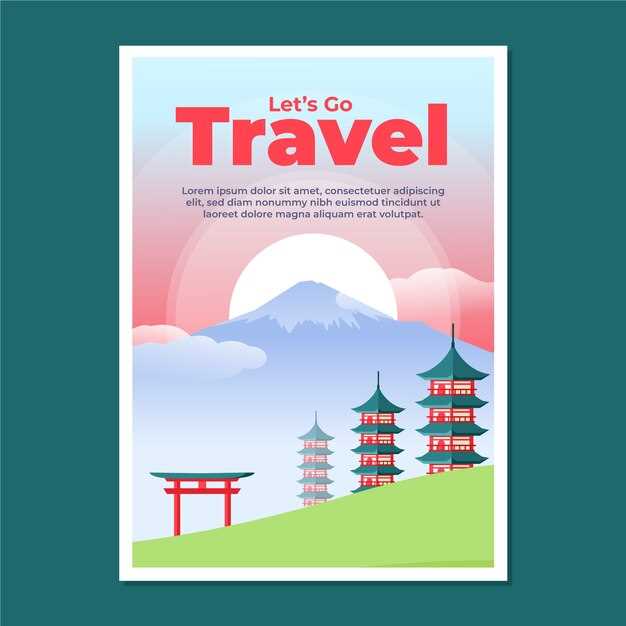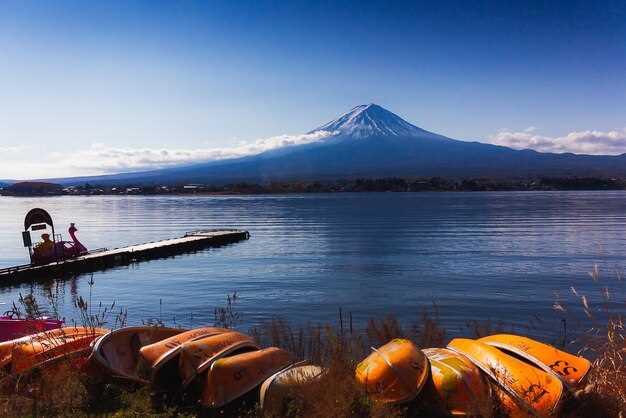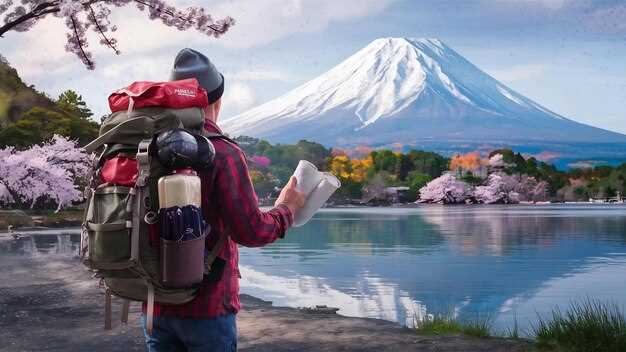Book this Fujiyoshida Day Trip from Tokyo for a focused, one-day Mount Fuji experience with diverse activities and smooth transitions between stops.
Most travelers ride JR to Otsuki and switch to the Fujikyu Railway to Kawaguchiko Station, a total time of about two hours.
From Kawaguchiko, enjoy a lakeside walk and a couple of short rides on the local ropeway to elevated viewpoints, capturing real Fuji scenery.
In winter, the air is crisp and visibility is often excellent, so plan extra time for photo stops and wear warm layers for the open-air sections.
Lunch options include local soba and curry with lake views; for dinner, choose a riverside restaurant or a cafe with Mount Fuji silhouettes. If you need a quick fix, lawson stores are handy along the route for drinks and snacks.
Time-wise, count about 6 to 8 hours on the Kawaguchiko loop, allowing a relaxed pace that starts in the morning and returns to Tokyo in the evening.
driving gives flexibility to linger at favorite viewpoints, skip waiting times, and make spontaneous stops, but check parking near Kawaguchiko and plan for potential winter road conditions.
For a broader Tokyo area plan, you can pair kamakura as a separate day, or arrange a longer itinerary that starts in Tokyo and ends with Fuji views on another trip.
Ready to go? Reserve this day trip and also enjoy a compact, practical itinerary designed for comfort, family, or friends, with clear directions and dependable transit options.
Practical plan for a seamless day trip from Tokyo to Mount Fuji and Kawagoe
Purchase a timed plan that covers Kawagoe and Mount Fuji in one day to keep everything seamless and efficient.
- Begin in Tokyo and reach Kawagoe early. From Shinjuku or Ikebukuro, take a fast train and arrive in about 40–50 minutes. Stroll Kurazukuri Street, where the front of brick warehouses frames an Edo-era vibe. Areas along the canal are photogenic, and you’ll find cozy restaurants and shops selling sweets and snacks.
- After about 90 minutes in Kawagoe, head back toward Tokyo and transfer to the route toward Mount Fuji. A typical path runs via Shinjuku to Otsuki (60–70 minutes) and then Fujikyu Railway to Kawaguchiko (40–50 minutes). The timetable keeps transfers smooth and minimizes waiting.
- Arrive Kawaguchiko around midday. For lunch, seek thick noodles or hoto at a lakeside restaurant with Mt. Fuji views. These spots offer amazing value and a clear, satisfying change of pace from city meals.
- Visit the Arakura Sengen Shrine viewpoint for a standout shot of arakura and the iconic mountain backdrop. The front approach provides a straightforward frame for photos, especially during blossoms season.
- Explore Kawaguchiko’s other areas around the lake. If you want a quick refresh, dip into an onsen nearby for a short soak; it strengthens the feeling of relaxation and helps you enjoy the rest of the day.
- Return to Tokyo in the late afternoon. From Kawaguchiko, ride to Otsuki, then transfer to the JR line toward Shinjuku. A typical loop fits into a single day, leaving time to reflect here or at a hotel nearby if you prefer a longer pause before the evening.
Practical tips
- Timetable: pre-check train times online and aim for earlier departures to maximize daylight and avoid crowds.
- Purchase: consider a one-day rail option or a reusable IC card to streamline segments and save money.
- Money: carry cash for small shops and onsen fees; most major spots accept cards, but cash is handy in smaller eateries.
- Noodle and hoto: look for restaurants near Kawaguchiko with thick noodles and hearty portions for a satisfying lunch.
- Restaurants: prefer places with quick service and clear menus to keep the plan smooth in areas with crowds.
- Photos: arrive early at arakura viewpoint and lakeside spots for clearer lines and fewer people in frames.
- Onsen: a brief soak near the lake helps you recharge before the ride back into Tokyo’s buzz.
- Front and transit: use the front of stations to orient yourself quickly and locate the correct platforms without delay.
- Iconic sights: the Mt. Fuji panorama over Kawaguchiko remains an amazing highlight, with several spots offering direct views from the water.
- Arakura and kanji: arakura is a simple, memorable stop that blends with the day’s colors and adds a calm moment to your plan.
- Hotel option: if energy runs low, consider a nearby hotel for a brief rest, then resume exploring the next morning–here’s a comfortable way to extend the trip without rush.
- Chain restaurants: a few reliable chains around Kawaguchiko provide predictable service and quick meals if you’re pressed for time.
- Elements to enjoy: you’ve got amazing views, photos, and the feeling of a well-coordinated plan that respects time and pace.
- What to have: a compact bag, camera, water, and a ready timetable help you stay on track and avoid missing trains.
- What you purchase: tickets, snacks, and a light onsen fee–keep receipts handy for easy budgeting during the day.
- Arakura, kodama, arakura: if you hear the word kodama in rail chatter, it signals a smoother express option on certain routes; ask staff for the fastest leg to Kawaguchiko to keep the plan efficient.
Fastest routes from Tokyo to Kawaguchiko Station: trains, buses, and transfer tips

Take the JR Chuo Line Rapid from Tokyo to Otsuki, then transfer to the Fujikyu Railway to Kawaguchiko. This is the best option for speed, with around 1h50m total travel from Tokyo Station, away from city traffic.
A direct highway bus from Shinjuku to Kawaguchiko Station can offer another fast path, typically 2–2.5 hours with no transfer. Reserve seats in advance for peace of mind; this option provides direct access to the fujikawaguchiko area.
At Otsuki, use a single ticket or Suica/PASMO to switch to the Fujikyu line; multiple trains run every 15–20 minutes, making the handoff smooth. Regarding transfers, Otsuki connects both lines smoothly. The Fujikyu ride to Kawaguchiko is directly accessible, and once there you can walk to the lake, shrines, and nearby instagram-famous spot.
Personally, I prefer this route for speed and reliability; early departures help you reach Kawaguchiko before crowds. If you stayed in Tokyo overnight, plan an early start. Afterwards, prepare to explore around the fujikawaguchiko area–the lake and mountain views are breathtaking, with blossoms in season. A fact: this route minimizes time on the road. Access to multiple instagram opportunities exists, including the best spot near the station. Note that kodama or other JR long-distance options wont beat this setup for Kawaguchiko, since they require extra transfers and time.
Fuji viewing order and must-see spots for a tight 1-day itinerary
Kick off at Kawaguchiko for the iconic Fuji view across Lake Kawaguchi, that mirror-like water and the peak rising behind. Take a train from Tokyo to Otsuki, then switch to the Fujikyu line to Kawaguchiko Station; the full ride takes roughly 2 hours. Located in Yamanashi prefecture, the morning air stays peaceful and wide-angle shots stay easy throughout the hours you have.
From Kawaguchiko, ride the Kachi Kachi Ropeway or stroll the north shore to catch reflections and the instagram-famous angles, especially when the sun climbs. This full loop lets you secure a strong first batch of photos and still leaves time for the next stop.
Next, head to Arakura Sengen Park to see Chureito Pagoda, a scene that mixes Fuji with a pagoda framed by blossoms or snow depending on the season. It’s also a favorite for many couple photos, and the vantage point is called one of the classic Fuji shots by locals.
Afterwards, transfer to Hakone for a peaceful Lake Ashi cruise; the view of Fuji across the water stays captivating and the shoreline paths offer a calm contrast to the city. If you have energy, add a short ropeway ride to Owakudani for volcanic scenery, then return to Tokyo via Odawara on the JR line–the last leg takes around 1.5–2 hours depending on transfers. Taking this route gives you a compact, unique loop that blends blossoms, lake views, and mountain panoramas.
| Stop | Order | Highlight | Notes |
|---|---|---|---|
| Kawaguchiko Station / North Shore | 1 | Iconic Fuji reflection over Lake Kawaguchi; optional Kachi Kachi Ropeway | Train from Tokyo to Otsuki, transfer to Fujikyu; ~2 hours total |
| Arakura Sengen Park – Chureito Pagoda | 2 | Framed Fuji with pagoda; blossoms or snow depending on season | Bus or taxi from Kawaguchiko |
| Lake Ashi, Hakone | 3 | Peaceful cruise; Fuji view across the water | Transfer to Hakone; consider ropeway to Owakudani |
| Tokyo return (Odawara/Hakone-Yumoto) | 4 | Efficient rail back to Tokyo | Rail via Odawara to Tokyo; ~1.5–2 hours |
Kawagoe detour: timing, highlights, and how to fit it in

Detour Kawagoe for 2.5 hours after Tokyo: reach Kawagoe by about 8:40, walking through Kurazukuri Street and the Kita-in precinct, then finish around 11:00 to ride toward Fujiyoshida.
Highlights include Kurazukuri Street with its iconic clay-walled warehouses, the Toki no Kane bell tower that marks the old town, and Kita-in Temple where Minamoto stories add historic color to a peaceful garden walk. Kawagoe Hikawa Shrine offers a compact shrine detour with a calm atmosphere, and you can treat yourself to sweet wagashi from a traditional shop behind the main street for a quick break.
Time tips: use a JR Pass or Tokyo-area pass to save money, and reserve seats on busy trains when possible. From Tokyo, you can reach Kawagoe in about 40 minutes by rapid Tobu or JR lines. From Kawagoe to Fujiyoshida, transfer via Shinjuku and take the Fuji Express toward Kawaguchiko, then a short local ride to Fujiyoshida. Total riding time is roughly 4–5 hours, leaving enough hours in the afternoon for lunch, photo stops, and a lake view before continuing to your Mount Fuji leg. If you have extra minutes, a short climb up tsurugaoka behind the shrines provides a panoramic overlook over the town.
Practical flow keeps things efficient: plan a full morning in Kawagoe, then a direct transfer to the Fuji area for an afternoon arrival. This keeps you from rushing seats or missing iconic photo moments, and you’ll still have time to grab a drink at a restaurant near the lake and share a couple of shots on instagram.
Photo-ready tips: shoot during the afternoon light along the old street, then switch to a panoramic midday view near the lake region around Kawaguchiko as you cross back toward fujiyoshida. The sequence offers enough variety for Japanese-style street scenes and modern travel photography, with a sweet contrast between traditional warehouses and contemporary cafes near the shrines.
Tickets, passes, and meal options that save time and budget
Get a combined rail pass for the Tokyo-to-Mount Fuji route, pairing JR lines to Otsuki with the Fujikyu Railway to Kawaguchiko. This minimizes transfers, speeds up the day, and cuts costs compared with buying separate tickets for each leg.
Optimal route and tickets: head from Tokyo to Otsuki on JR, then switch to Fujikyu for Kawaguchiko. From Kawaguchiko, local buses reach the Fuji Five Lakes area. If you’re in Kanagawa prefecture or nearby, this setup remains efficient for a quick connection there and back. A round-trip option that combines JR and Fujikyu can cost around 4,000–6,000 JPY per person, depending on seat reservations and timing. Look for a Fujikyu One-Day Pass if available for your date, as it may cover multiple local trains and buses there and back, saving you time and money across the day.
Before departure, grab a quick bowl of noodles at a nearby restaurant before you head out; casual spots around Kawaguchiko and Shinjuku offer set meals under 1,000–1,200 JPY. When you order, choose a simple option (noodles, rice, soup) to maintain energy for the day. If you want a cultural touch, look for soba or udon in lakeside towns, and keep a few snack items in your bag to avoid long lines at peak lunch hours.
Winter conditions require planning: snow can slow buses and obscure viewpoints, so head out early and check the morning forecast. The area offers great photos with Mt Fuji behind a wintry backdrop, so wear warm, waterproof layers and sturdy shoes. Some stalls and a food truck near busy spots provide hot options to warm up, including spicy noodles and curry. There are reliable restaurants with views near Kawaguchiko Station, letting you order a hearty meal without delaying your return.
If youre aiming to maximize time, confirm schedules the night before, reserve seats if possible, and carry a compact map and some resources for the day. The location is easy to navigate with a clear route from Tokyo, and you’ll find long trains unnecessary if you switch to the Fujikyu line at Otsuki. Heading back, you can return via the same route and be ready for a late evening Shinkansen or local lines depending on your plans.
Packing list, accessibility notes, and safety reminders for a day on Fuji
Pack a compact daypack with a rain shell, a warm layer, and sturdy shoes before dawn, then choose two options for your Fuji day: a direct ascent from the fifth station or a half-day walk from Kawaguchiko that offers breathtaking, picturesque, iconic views. This itinerary keeps things efficient and safe, with clear steps for transit and breaks.
Essentials you should carry: water bottle (1–2 liters), electrolyte tablets, snacks in a small dish, sun protection (hat, sunglasses, SPF 30+ sunscreen), moisture-wicking base layers, gloves, a lightweight rain jacket, and a compact first aid kit with blister pads. Bring a map or offline GPS and a power bank; for a one-way route, pack a compact headlamp and a whistle. Insurance information and a copy of your ID stay in a waterproof pouch, and store contact numbers for your travel partner or host in a dedicated pocket. If you’re using transport arranged by fujikyu, have your fare ready, and consult the fujikyu schedule for access times.
Accessibility notes: The Kawaguchiko area provides some accessible paths along the lower sections, with stairs at several viewpoints. Access to facilities and restrooms is generally straightforward, located near main stops, but higher trail sections become uneven and slippery when wet. If you travel with a mobility device, ask staff at the fujikyu area for the best supported routes and lift options where available. There they can suggest safer paths and nearby rest areas.
Safety reminders: Under calm weather, dawn light creates a peaceful, iconic start. Check forecast and wind before you start; temperatures drop quickly, so bring a windproof layer. Start early to catch peaceful dawn air and avoid crowds. Wear traction-ready footwear and stay on marked paths; do not step on loose gravel or shortcut steep slopes. Take regular breaks, hydrate, and eat a small, steady diet of snacks. If you feel dizzy or short of breath, descend to a lower point and rest. Have a plan with your partner or guide, and keep insurance details accessible in case of minor injuries; Fuji staff and station attendants are on hand to help.

 Fujiyoshida Day Trip from Tokyo – One-Day Mount Fuji Itinerary">
Fujiyoshida Day Trip from Tokyo – One-Day Mount Fuji Itinerary">
